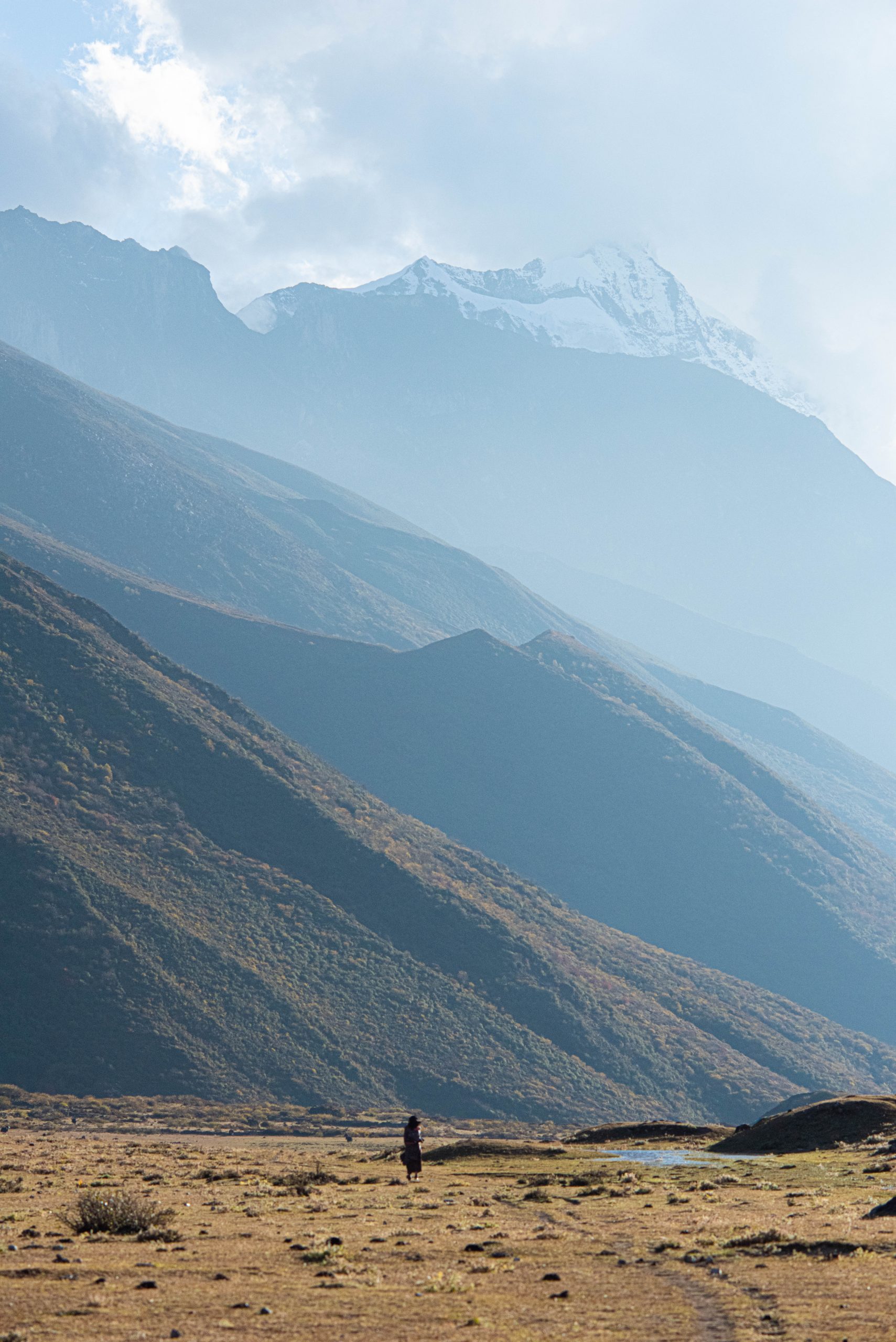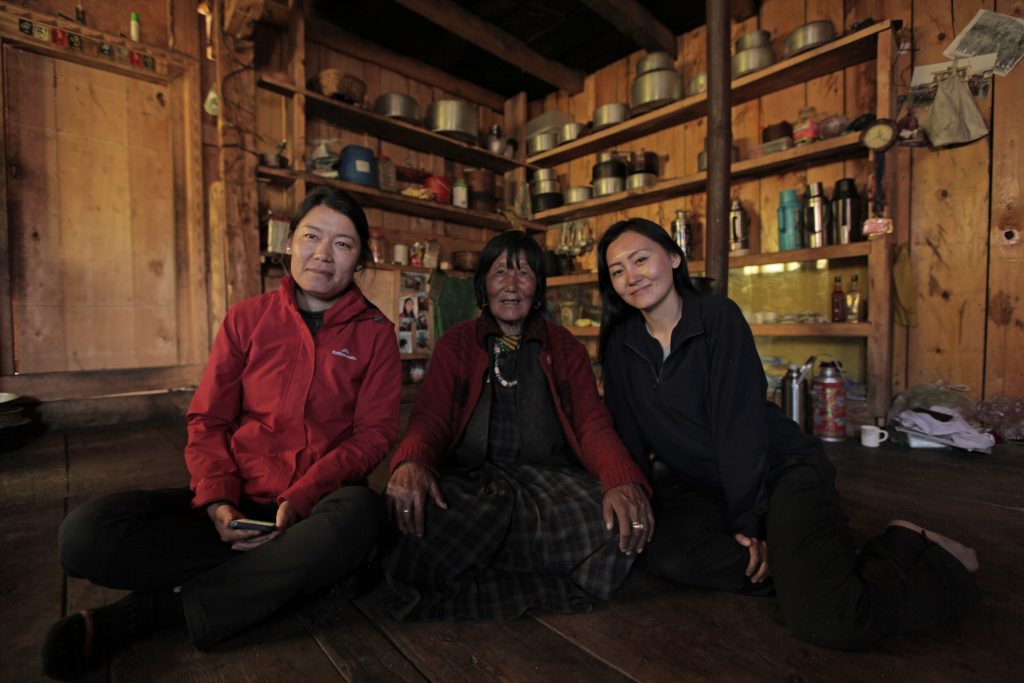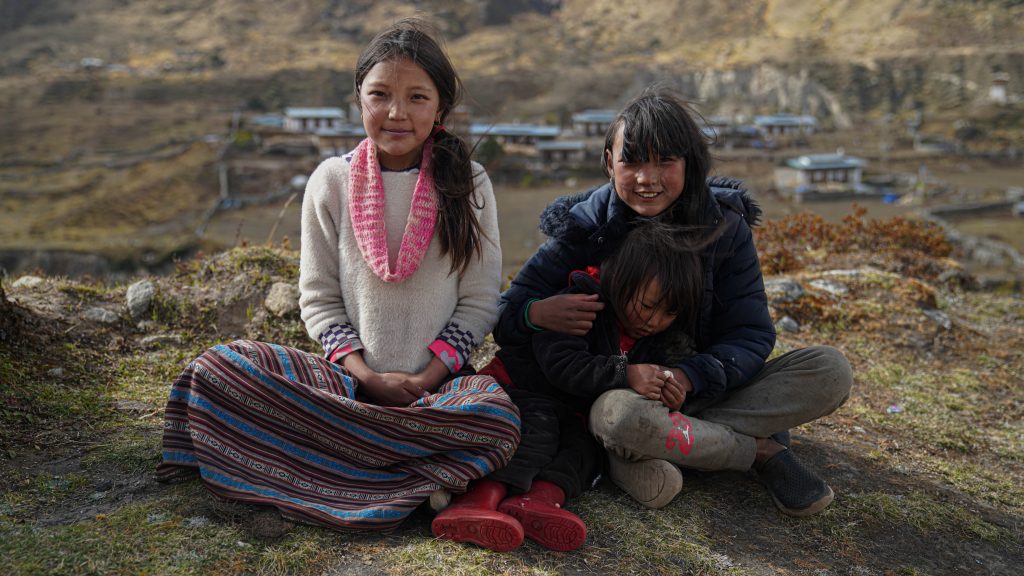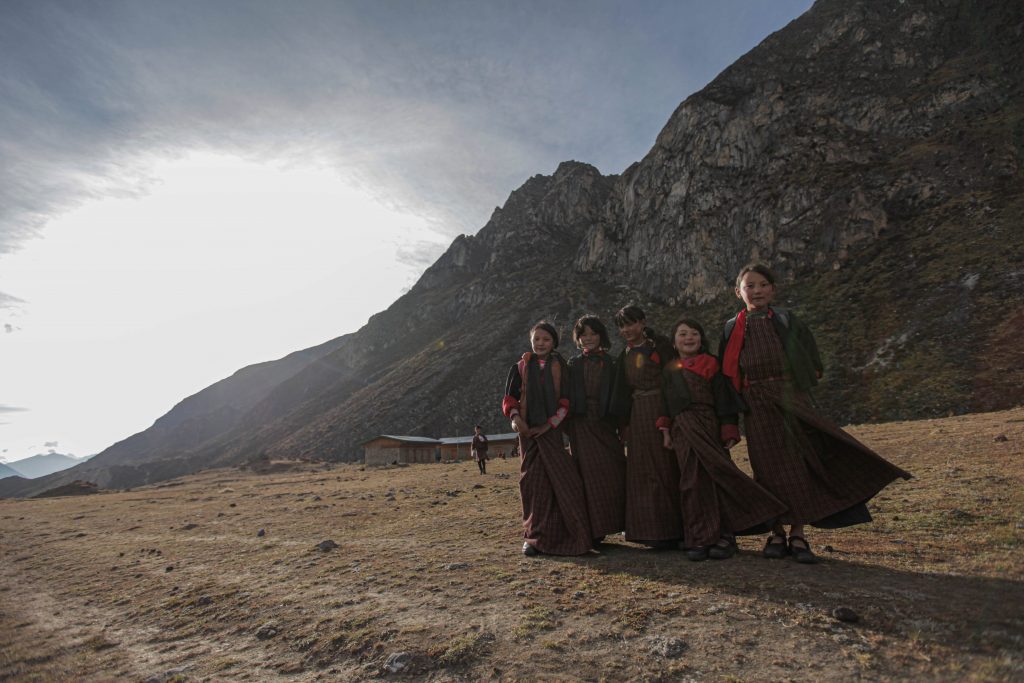
Probably the first thing you hear about Lunana is the cordycep boom. “Cordyceps have transformed the lives of the people here,” says the Gup. People have become prosperous ever since the harvest was legalized less than a decade ago. Lunaps now own land and buildings in Punakha, their winter retreat. But there’s also something else happening because of the economic boom.

The Harsh Reality
Aum Dorji of Thanza shared her concerns with her community’s over-reliance on cordeceps. “I tell my relatives and my children not to be blinded by the money that comes in. We must not spend like we’ve always had money. We need to learn to save and we cannot guarantee that this will continue to support us in the future. ”There’s a lot of truth in her concerns. In the last few years, there’s been evidence from locals showing the decreasing amount of the precious fungus. This can be attributed to increasing harvest or possibly climate change. According to collectors, caterpillar fungus production has decreased due to habitat degradation, climate change, and especially overexploitation. “If there are no cordyceps, we’ll end up back in our old ways,” says Aum Dorji.

It’s always encouraging to see a remote community move forward. Lunana has come a long way. The ancient village homes and backyards that once hardly grew anything now have greenhouses with abundant vegetables.
The valley with no trees now has stacks of logs in front of the village homes brought on horseback from the lower treeline regions. Economic prosperity is good for any community, but with that blessing comes the need for the community to understand and protect that very blessing. Understand sustainability. Some do and some don’t. “But what about the young people there? Do they understand what kind of future they might have?”

The Children of Lunana
Here’s something you may not know about the children in Lunana: they’re all skilled in picking cordyceps. I always thought it was the adults who went to the high mountains to pick the fungi. Turns out, they were always helped by little hands.
“I’m much better at picking them than my parents,” says 11 year old Chimi Lhaden of Tenchoe, “You can’t see them easily. You have to crouch on all fours like an animal looking for food,” she says giggling. 12 year old Karma Chenzom looks forward to the annual trip every year. “It’s like a family picnic. We take food, stay together in a tent in the beautiful mountains.” The children pride themselves in helping their family, many of whom collect more than hundreds of the precious fungi per day while they’re up there.But annually when the entire family moves to the mountains for the harvest, that also means taking their children out of school – not just to help them pick cordyceps but because there’s no one home to look after them.

That’s what 6 year old Chimi Lhaden said to me when I asked her what she wanted to be when she grew up. And this little one wasn’t the only one with big dreams. During our visit to the ECR in Thanza, we met many more like little Chimi.
Cordyceps and its Effect on Education
The children showed a great deal of enthusiasm and curiosity while we were filming, volunteering to assist us as well. While we were interacting with the children, the teachers shared something that’ll break your heart. Most of these children will not continue education after the early grades. “They just stop coming to school. Even the ones who are good in studies. “During our time in Lunana we came across a lot of preteens who dropped out of school. “I don’t like studying and my family makes more money when I go and collect cordyceps,” said a young boy. But why is it so common here? Is it only because of cordyceps?

Namgay Dorji has been teaching at the Tshoju ECR since 2013. “It isn’t only because of cordyceps. It’s not easy for families to keep their child in school. Life in the mountains is a difficult one. When families leave the valley to take their yaks to the mountains, there’s no one to look after the children. The schools here don’t have boarding facilities so they don’t have a choice.” Lopon Namgay also shares the conditions of the classroom especially during the cold seasons. “There’s no heating system and the cold winds of Lunana are unbearable. We have to send them home early because it’s too cold for the children to study.” Namgay sir also shared how he lost a very bright student because his family didn’t have anyone to look after his siblings.
To be honest, it was grim listening to the plight of education in Lunana. But many do feel that the youth will be alright with the money they make from cordyceps. But is that enough for the children’s future? Will more resource support improve the student turnout? Or will more educated students mean that no one will come back to the villages (a pattern we’re seeing in many rural communities in Bhutan) what do you think?

Me, personally…I don’t know what to say. Who am I to judge what’s good for a community that I don’t know much about? What do I know about what they go through? All I can say is that I pray that little Chimi does get to fulfill her dreams, at least a chance to work towards it. Yes, maybe they will be alright with the cordycep money but are dreams that you wish upon when you’re a child really fulfilled by money? Dreams are fulfilled when your sense of purpose is achieved, with your sense of passion, and I saw that dream in their little eyes.